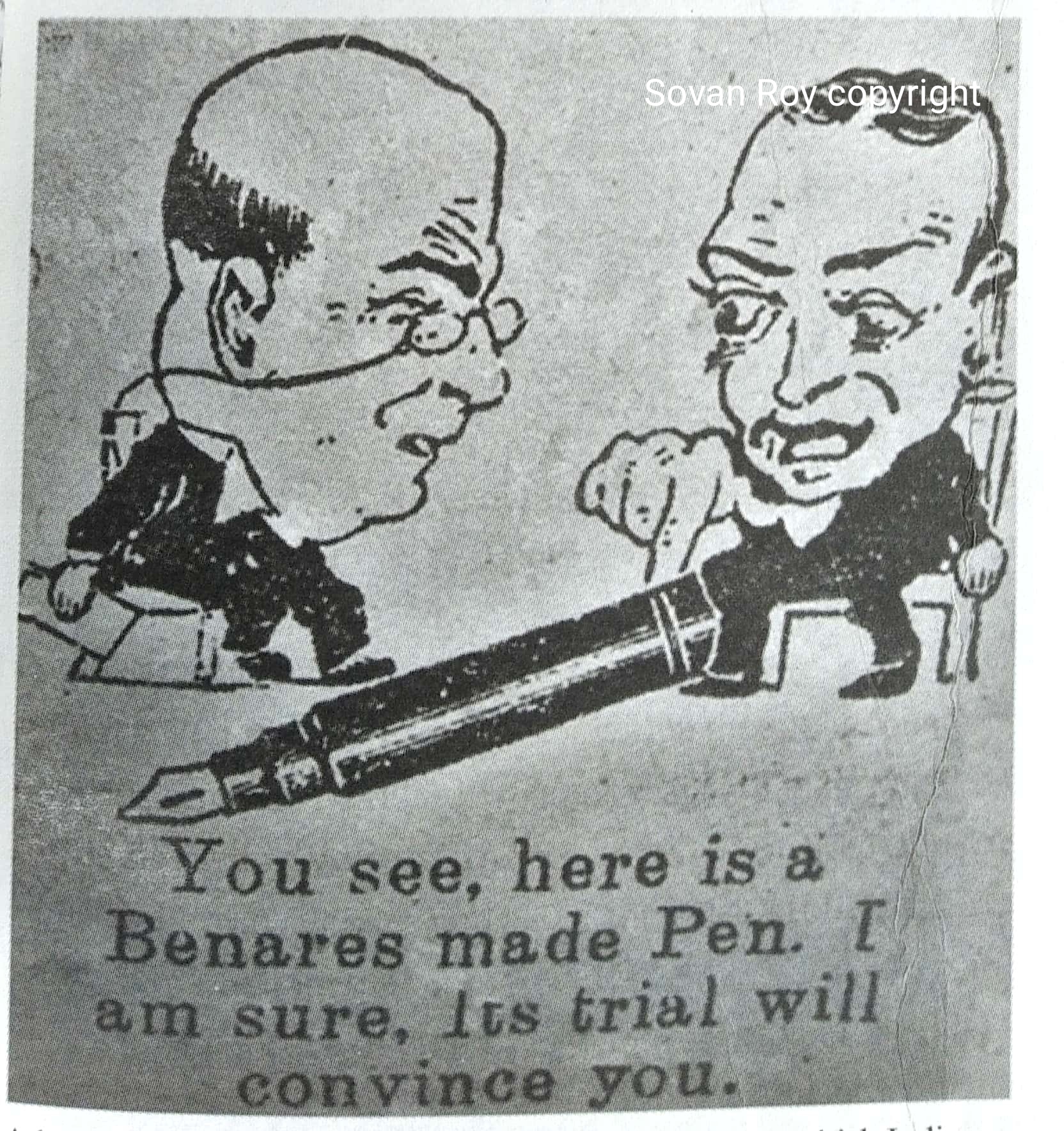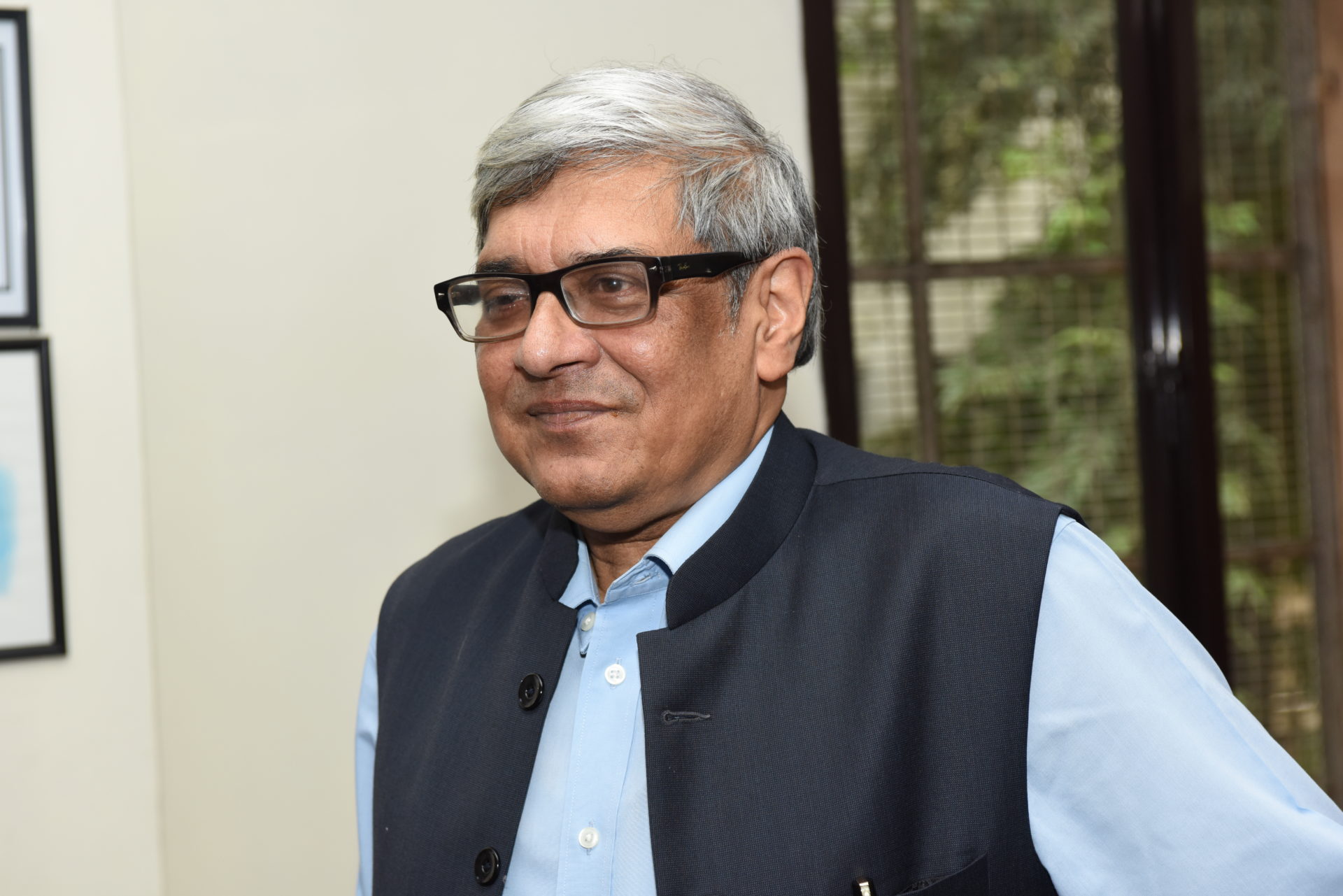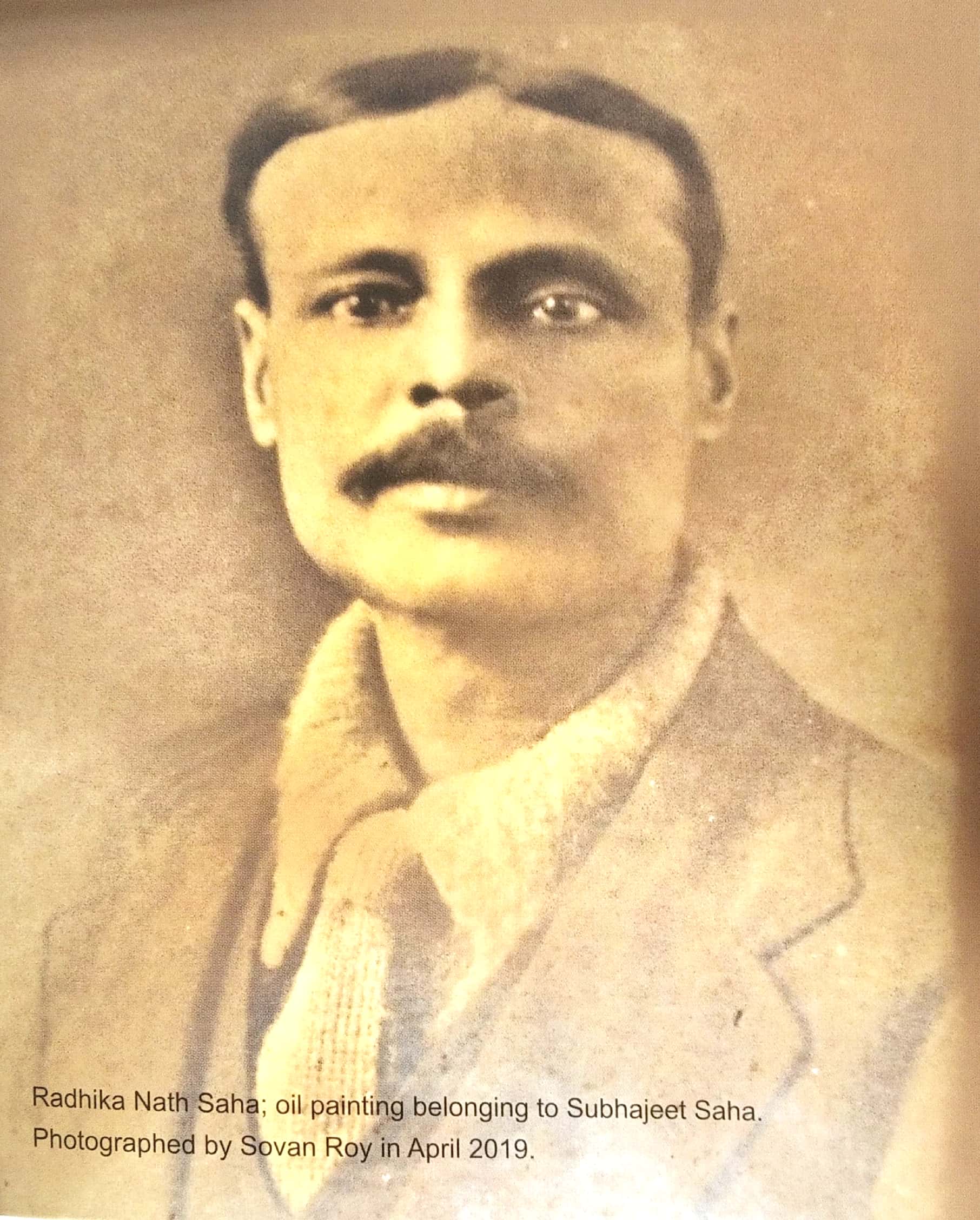
The story of Kosuri Venkata Ratnam meeting Gandhiji and Ratnam pens (dated 1932-35) has been documented extremely well. Ratnam pens are celebrated. When President Ram Nath Kovind visited the Pablo Neruda Museum in Santiago on 31st March 2019, the press release by Rashtrapati Bhavan stated, “He gifted a special pen to the Museum made by the family whom Gandhiji encouraged to develop the first indigenous fountain pen in India.” Ratnam pens have been gifted to other dignitaries too. For example, Prime Minister Narendra Modi gave German Chancellor Angela Merkel a Ratnam pen.

Without diminishing Ratnam’s success in any way, there was Radhika Nath Saha and Luxmy Pens in Varanasi in 1907. Recently (2019), Sovan Roy wrote a book on Radhika Nath Saha (Radhika Nath Saha: Unsung Hero of Indian Fountain Pen, published by Kabitika and Inked Happiness), chasing various leads. Luxmy Pens was so named because Radhika Nath Saha’s house used to be in Luxmy Kunda, Varanasi. Sovan Roy’s book is a biography of sorts, with details of patents obtained by R.N. Saha, in India and abroad. We also learn that Mahatma Gandhi, Rabindranath Tagore, Dr Rajendra Prasad and Maulana Abul Kalam Azad possessed these pens. There is no need to revisit that. Instead, I want to highlight Radhika Nath Saha’s book (Romance of Pen Industries, Bei ng A Complete Manual for the Manufacture of Writing Materials, their History, Progress, and Effects on human advancement, with special reference to the Economics and Prosperity Problems of India). This was published by Baptist Mission Press in Calcutta in 1911. It can be downloaded from free sites on the Net. Coincidentally, 1911 was the year when a sailor friend gave Kyugoro Sakata, an engineer based in Hiroshima, a fountain pen imported from England. This led to the establishment of Sailor Pens, the first company to make fountain pens in Japan.
In 1911, Dr Saha gave us a list of 120 patents granted on different types of fountain pens. There was also a list of global fountain pen makers in 1911, numbering fourteen – (1) Mabie, Todd and Bard (London), with the “Swan” brand; (2) Waterman (New York); (3) De La Rue (London and USA), with the “Nota Bene”, “Pelican”, “Onoto” and “Onostyle” brands; (4) Jewel Pen Company (London); (5) Eagle Pencil (New York); (6) Moore’s; (7) Dr Faber (Toledo); (8) A. W. Faber (USA), with the “Independent” brand; (9) Burge, Warren and Ridgley (London); (10) Parker and Lawrence; (12) A. T. Cross (England and USA); (13) Paul Ewart Bloomsbury (USA); and (14) Conklin Pen Company (Toledo, USA). The book mentioned nib factories that had been started in India – Gwalior State Nib Factory, a factory set up in Mumbai by Tambat Brothers and the Gujarat Nib Factory in Punjab.

I thought I would probe that statement about nibs and found All India Swadeshi Directory, published by Allahabad Law Journal Press in 1933. This gave a list of 12 “Indian” or “Swadeshi” nib manufacturers in 1933. They were: (1) C. M. Karmakar and Company, Comilla; (2) F. N. Gooptu and Company, Calcutta; (3) Ideal Pen Works, Sialkote; (4) Ishwar Singh, Lahore; (5) Kulkarni Brothers, Bombay; (6) M. Hirday Narain, Lucknow; (7) Model Industrial, Agra; (8) Nib Manufacturing Company, Bombay (in Sandhurst Road, Girgaon); (9) Puri Iron Works, Gujrat, Punjab; (10) Tambat Brothers, Gwalior; (11) V. S. Ball and Company, Bombay; and (12) Waise Brothers, Sialkot. These may have been nibs for dip pens, not necessarily fountain pens. The nib manufacturers mentioned by R. N. Saha do feature in this list. Gujrat means the Gujrat in Pakistan and he seems to have got the location of Tambat wrong. The Tambat Nib Factory was important enough to be mentioned in a Gwalior Handbook, published in 1936 (A Handbook of Gwalior, M. B. Garde, Alijah Darbar Press, Gwalior, 1936). “Established at Kurla in 1907, the factory was shifted to Gwalior in 1911. It manufactures writing pen nibs of 18 varieties and hair and drawing pins. The machine plant (of nibs and pen manufacture) is designed and built by Tambat Brothers themselves at their own works…Tambat Brothers have been awarded “special appointment warrant” by His Highness the Maharaja Scindia.” There seems to be no record of what happened subsequently to C. M. Karmakar and Company of Comilla. Comilla is now in Bangladesh. At that time, there were other nib manufacturers in Barisal and Dhaka too, not just Comilla. For example, there are references to Golbadan Swadeshi Factory, set up in Dhaka in 1904-05 for the manufacture of pens, pencils, pen-holders and nibs.

What struck me most in Dr Radhika Nath Saha’s book was the definition of a fountain pen, as given in Hutton’s Mathematical Dictionary (Dr Saha gives a date of publication of the dictionary of 1795, though Hutton’s two volumes seem to have been published in 1815. Perhaps there was an earlier edition.) “The fountain-pen consists of divers pieces of metal, the middle piece carrying the pen, which is screwed into the inside of a small pipe; and this again is soldered into another pipe of the same size as the lid; in which lid is soldered a male screw, for screwing on the cover; as also for stopping a little hole at the place, and hindering the ink from passing through it: at the other end of the piece is a small pipe, on the outside of which may be screwed the top cover. A portecraion (portecrayon or holder) goes in the cover, to be screwed into the last-mentioned pipe, to stop the end of the pipe into which the ink is to be poured through a funnel. To use the pen, the cover must be taken off, and the pen a little shaken, to make the ink run more freely.” Except that last sentence, which makes sense even today, everything else sounds awfully complicated.
Bibek Debroy is an economist and was educated in Ramakrishna Mission School, Narendrapur; Presidency College, Kolkata; Delhi School of Economics and Trinity College, Cambridge. Presently, he is Chairman, Economic Advisory Council to the Prime Minister (EAC-PM) and President, Indian Statistical Institute (ISI). He has worked in Presidency College, Kolkata (1979-83), Gokhale Institute of Politics and Economics, Pune (1983-87); Indian Institute of Foreign Trade, Delhi (1987-93); as the Director of a Ministry of Finance/UNDP project on legal reforms (1993-98); Department of Economic Affairs (1994-95); National Council of Applied Economic Research (1995-96); Rajiv Gandhi Institute for Contemporary Studies (1997-2005); PHD Chamber of Commerce and Industry (2005-06); Centre for Policy Research (2007-2015); Member, NITI Aayog, Government of India (Jan.2015 – Jun.2019). He has authored/edited several books, papers and popular articles and has also been a Consulting/ Contributing Editor with several newspapers.
For More by Bibek Debroy look here:
MARK TWAIN, GRAHAM GREENE AND JAWAHARLAL NEHRU ON FOUNTAIN PENS: Bibek Debroy

Very interesting history! Thank You, Inked Happiness, for sharing this enjoyable article, full of attention-getting information.
Amazing article sir. And very enlightening and interesting read. It was fasinating to read this piece. Thank you for sharing
Another great piece about the first Indian fountain pen history.